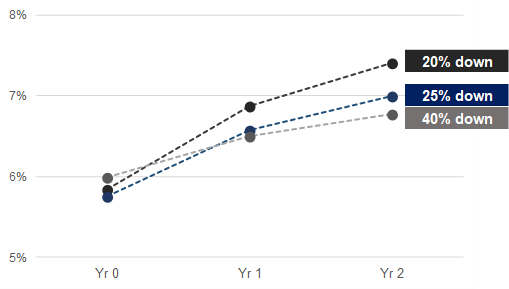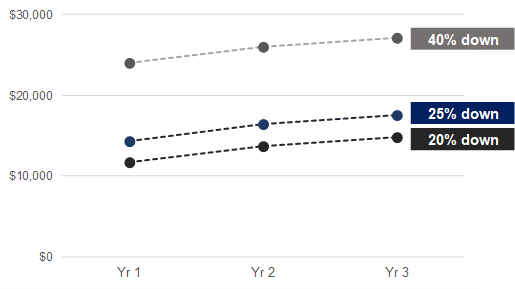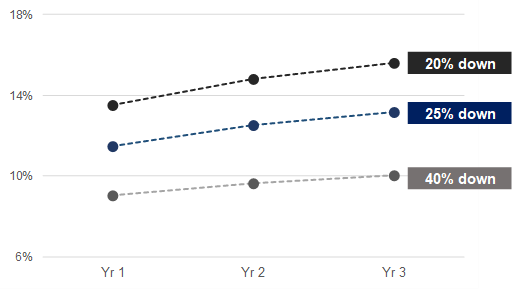How much should I put down?

You're probably thinking "as little as possible".
That's probably true. But there's a trade off you should understand.
A higher down payment means you've got a smaller mortgage. A smaller mortgage means you're paying fewer dollars in interest and principal. Fewer dollars in interest in principal means more cash in your pocket.
But there's a flipside to this.
A higher down payment means each dollar isn't working as hard for you. Which means lower returns or a lower return on equity.
This is a real example of a 3-unit property in a large town just outside a city. I've modeled cash-on-cash returns, cashflow, and return on equity for the first three years. Note: mortgage rates are often lower when you put 40% as a down payment. That's also included in this example.
Cash-on-cash returns

Cashflow

Return on equity

Cashflow goes up as you put more down. Returns - whether cash-on-cash or return on equity - go down as you put more down.
How do you decide how much to put down? Go back and look at what you wrote for yourself using this post:

If you know your financial objectives you should know the answer.
Model the three year cash-on-cash, cashflow, and return on equity for yourself. You'll make the best decision for your circumstances.

